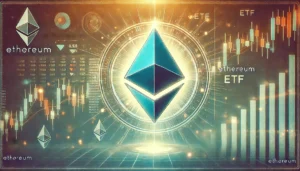TOP 3 reasons why ETH may not reach $ 5,000 in the near future
2 min readPhase one, which introduces scalability through sharding, has been postponed to 2022. In addition, the decentralized nature of DeFi for ETH may not be as beneficial as it seems at first glance. So what are the bearish indicators for ETH?

Rising fees certainly affected investors’ expectations. Not only was it clear how limited the network was, but it also encouraged traders to experiment with alternative networks. Examples are Binance Smart Chain (BSC) a Polygon’s Layer 2 solution.
The chart above shows that the average fee of $ 45 took place one month after upgrade Berlin on April 15. The ETH community agreed that Berlin was less efficient in the short term, but paved the way for the expected London.
Delay London fork
Hard fork ETH London is part of Eth2’s final release plan in 2022. The long-awaited update is scheduled for August 4, but has already been postponed.
Miners will be most affected by the EIP-1159 proposal, which aims to burn part of the fees generated for Ethereum blockchain, thereby reducing their revenue. EIP-3554 in addition, it introduces a gradual difficulty adjustment that stimulates migration to the new Proof-of-Stake blockchain.
If there was a partial upgrade and more controversial changes were postponed, the price of Ether could fall. Part of the current uptrend is based on the hype surrounding the hardfork.
Mining ETH
As soon as it becomes number of ETH miners that their source of income will be gradually reduced, it is only a matter of time before some competing networks will benefit.
Although most intelligent contract blockchains have been designed as proof of stake, some lesser-known projects could change their algorithm to support Ethash mining.
Analysts should not rule out the possibility that Binance Chain or Solana could implement an additional security layer using extra hash force. Although this scenario is in the distant future, these movements would undoubtedly put pressure on the price of ETH.
Multi-chain dApps
The longer it takes to fully implement Eth2 and update the dApps code to support parallel processing features, the higher the incentives to add multi-chain support.
Curve and AAVE, two leading protocols DeFi by total locked value (TVL), they have added support for blockchains other than ETH. According to DeFi Llama, meanwhile, Polygon owns Curve contracts worth $ 550 million and AAVE another $ 1.8 billion.
In the end, the most likely “Ethereum killer” will be the network itself. Postponing the scaling solution would push users and dApps to alternative solutions. At the same time, migration to PoS opens up space to strengthen competing blockchains.







